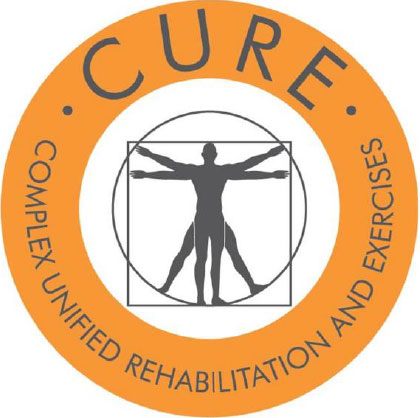
“The time for action is now. It's never too late to do something.”
Antoine de Saint-Exupery
"CURE"
INFORMATION LETTER
Project Founder: Dr. Serguei Kisselev
Editor: Svetlana Kisseleva
Objectives of the “Cure” method
- To promote research into, and knowledge of, the causes, mechanisms, diagnosis, treatment and other aspects of the “Cure” method.
- To provide a forum for the exchange of ideas related to the “Cure” method.
- To educate physicians, other health professionals and the general public about the “Cure” method
- To encourage the management of acute and chronic conditions to be conducted in a scientific and ethical manner.
- To promote, arrange and conduct meetings, seminars, conferences lectures, discussions and courses of study on the “Cure” method and related topics.
- Content:
- CURE method – introduction
- LED or LASER for LLLT?
- Case – severe shoulder injury rehabilitation
- GP Training and Recruitment
- “CURE” equipment for “CURE” method
“CURE” method in women’s wellbeing and ageing.
Irina Kisseleva
Registered Nurse, Credentialed Diabetes Educator, owner and principal of Women’s Wellness Clinic, Sheffield, Tasmania, Australia
The modern rhythm of life, as a rule, does not allow us to engage in physical activities, even in minimal quantities. Technical progress facilitates human life in a modern society, there is no argument there. Spending most of the day inside of institutions, companies and offices, we forget about walking and cycling, swimming, dancing and active games in the fresh air.
For example, to come to work, you just need to get into a car or call a taxi. We get to the apartment on the upper floors by elevator, we use a vacuum cleaner to clean the house. Accordingly, our body is constantly in a calm state. And over the years it loses its flexibility, our muscle mass atrophies. All this can be called physical inactivity. Thus, inactivity is a sedentary lifestyle and a disease of modern humanity of the 21st century.
Fatigue, stress and discontent in life can cause discomfort and pain in various parts of the body.
Aging is the same significant stage of life and development as any other period. Each person is aging in their own individual way and experiences it in their own way. Often, the nature of a person remains unchanged throughout life, so you may not even notice significant changes in yourself. In addition to the natural aging process, various diseases also affect capacity. Older people are usually worried about the weakening of physical abilities, the impact of diseases on the quality of life, an increase in the need for outside help, and the slowdown and difficulty in carrying out everyday activities. Consciously and subconsciously, we associate a person’s age and attractiveness with the appearance of their skin. Like other organs of the body, the physiological functions and structures of the skin constantly deteriorate as they age. Dry skin, surface wrinkles and deep wrinkles, enlarged pores and age spots are external signs that are associated with aging skin.
Many factors, external and internal, lead to aging of the skin. These reasons can be easily divided into three main categories: biological aging, environmental aging, and mechanical aging.
Using the “CURE” method lets us manage many different aspects of a women’s
health and wellbeing, such as reduced skeletal muscle tone and strength, weight
management, cosmetological, psychological etc.
There are a lot of well-respected clinics and services specialising in exercise,
weight management, cosmetology, dietology and physiotherapy, but not many of them provided their clients and/or patients with a complex management of
the problems, which most of the time have to be treated together.
For example, skin conditions depend on a number of factors: underlying muscle
tone, bowel functions, hormonal changes, stress, environmental factors, stress,
chronic medical conditions etc.
Using the “CURE” method we are able to improve muscle tone relatively
quickly, regulate bowel function, reduce aches, pains and other problems
associated with women’s hormonal changes, improve the skin’s condition/hydration, optimise body weight, and as a result, improve total
wellbeing. Of course, the management of underlying medical conditions is an
essential part of the method.
At our “Wellness Clinic” we successfully use the “CURE” method for
- Cosmetological conditions: Acne, skin ageing – facial and hands,
- different skin irregularities
- aches and pains,
- weight management
- total wellbeing
We would not to be able to achieve the success without:
- Electrostimulation equipment – using different types of currents
- “Skin Classic” high frequency current equipment
- PBM/LLLT equipment
- Vibrosauna
- Passive Pilates equipment
- Resistant exercise equipment
- Professional cosmetic products
It’s no secret that an individual, holistic approach is the key to most of our
clients/patients gains. Cosmetic, physical and psychosocial benefits cannot be
achieved by medication or any other single method alone.
Reduction in depression and anxiety, enhanced mood status, restoration of self-
confidence, decreased illness behaviour, resumption of hobbies and return to
work and increased social interaction are major indicators of the effectiveness
of the “CURE” method.
Age-related changes in the skin
Dr. Radzhabova Madina Madzhitovna
Principal Specialist of the “MK – Clinic”, Moscow, Russia
Skin aging is a complex biological process of metabolic, structural and functional changes in the body, capturing both internal organs and systems and the tissues that make up the appearance.
The tissues that make up the appearance include the skin and some muscles (facial muscles, muscles in the face and neck).
There are many theories of aging. Here are just a few of them:
The Genetic theory
The result of a genetic program by which specific genes restrict cell proliferation.
Hayflick Theory of Cellular Aging (“Hayflick Limit”)
According to this theory, human fibroblasts (the main cells of the dermis) are able to divide a limited number of times (75-80 times), after which their ability to proliferate is exhausted, and they are able to stay in this state for a long time.
Free radical aging system
Aging is caused by the damaging effect of its own free radicals, which are normally formed as by-products of metabolic processes in each cell. Molecules of free radicals cause damage to cell membranes, collagen, DNA, structural proteins and also cause the failure of gene regulation processes. Most toxic radicals are neutralized in the body even before they manage to damage certain cell components. The main internal factors of the antioxidant defences of the body are some vitamins and enzymes. Vitamin C (ascorbic acid) has a 100% proven antioxidant effect. The lack of natural antioxidant can be compensated by the use of synthetic antioxidants, which are functionally close to natural ones.
Thermodynamic theory of aging
According to this theory, fluctuations in environmental parameters, such as pH, temperature, ionic strength of the environment, etc., have a significant effect on the human body.
According to other theories, a complex of age-related immune and neuroendocrine disorders also plays a significant role in the appearance of the signs of aging.
Aging can be natural and premature. The limit of natural ageing is 50 years. This is a process that cannot be prevented. Premature aging includes a complex of signs of age-related changes in the body as a whole, and skin in particular, which can be corrected using modern techniques.
It is necessary to distinguish between internal and external factors of natural and premature aging. Internal factors may include genetic characteristics, endocrine disorders, foci of chronic infection, etc. Among external factors, UV radiation, aggressive weather conditions, adverse working conditions (frequent change of climatic and time zones, night shifts, etc.), unbalanced diets, improper skin care and the presence of bad habits are included.

Currently, it is customary to distinguish three main differences in aging skin:
- Chronological
- Menopausal (hormonal – associated with the onset of menopause)
- Photoaging (associated with the action of ultraviolet radiation)
Often, chronological and menopausal aging are combined with the general term “biological aging”.
Biological aging, types of skin aging
Depending on the morphological changes in the skin of the face and neck during the life of the person, three main periods are conditionally distinguished:
The period of age evolution (from birth to 20-25 years).
A period of some stabilization of age-related changes (from 25-30 to 40- 45 years). During this period, only the fibrous structures of the skin change. In the fourth decade of life, its elasticity decreases.
The period of age-related involution (after 40-45 years). At first, atrophic changes in all skin structures increase slowly and then quickly. Atrophy of the spine-like, granular and shiny layers of the epidermis is noted with a normal thickness of its stratum corneum. The stratum corneum thus acquires a loose structure and retains moisture to a lesser extent than before, its cells decrease in size, and the pigment content increases.
The deep layers of the skin, especially elastic and collagen fibres, undergo large changes. This happens due to a decrease in the level of estrogen (female sex hormones) in the body in old age, which to some extent explains earlier manifestations of the signs of skin aging on the face and neck in women than in men.
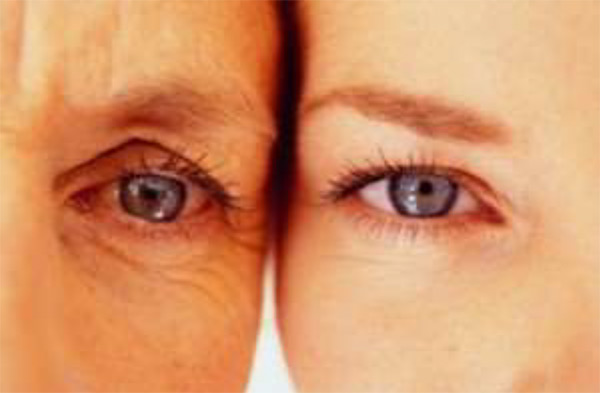
The stages of the appearance of signs of withering of the skin can be represented as follows:
Eye area:
- Around the ages of 20-25, the appearance of a network of small superficial wrinkles in the corners of the eyes;
- Around the ages of 30-35, the appearance of so-called “crow’s feet, which are radial folds in the corners of the eyes;
- a change in the condition of the skin of the upper and lower eyelids: the appearance of overhanging folds in the upper eyelid, drooping eyebrows, visually perceived as a narrowing of the palpebral fissures, as well as saccular formations in the lower eyelid (not caused by the pathology of the internal organs); ptosis (omission) of the upper and lower is accompanied by the formation of fat “hernias” of the eyelids.
Forehead area:
- the formation of longitudinal folds (“frown lines”) in the forehead;
- the appearance of transverse folds in the nose (“concentration wrinkles”).
The area around the mouth:
- deepening of the nasolabial folds;
- omission of the corners of the mouth;
- the formation of small transverse folds above the upper lip (“pouch”).
The area of the cheeks, neck, auricle:
- decrease in turgor (density, fullness), skin elasticity and muscle tone in the cheeks and neck, leading to a change in the shape of the face;
- the appearance of folds in the behind-the-ear and frontal areas, a change in the shape of the auricle due to sagging of the lobule.
An important role in the development of aging is played by physiological age- related changes in the endocrine sphere, especially occurring in a woman’s body. After the onset of menopause, the aging process accelerates.
Various types of aging are also recognized. When assessing the signs of age- related skin changes, it is important to consider the type of aging, since the algorithms for their correction differ from each other.
Photo-aging
To date, extensive information has been accumulated on the negative effects of ultraviolet exposure on the skin. The ultraviolet spectrum is represented by three groups of rays.
- Ultraviolet rays C (UVC) – short-wave, have the most damaging effect on the body. Their influence is minimal since they are adsorbed by the ozone layer and practically do not reach the earth.
- Ultraviolet rays B (UVB) – medium wave. They damage the skin as much as possible, but their effect is significantly weakened by cloudiness, and clothing and windowpanes delay penetration.
- Ultraviolet rays A (UVA) – long-wave. The damaging effect of UVA is 1000 times weaker than UVB. However, they reach the earth’s surface much better, and their penetration does not depend on the time of day, latitude or time of year. These rays are not delayed by the ozone layer, they penetrate through clouds, clothing but not tinted glass.
The source of ultraviolet radiation is not only the sun, but also solarium lamps. Ultraviolet rays A and B differ in the depth of penetration into the skin. 90% of UVB is blocked by the stratum corneum, while UVA is able to penetrate into the deeper layers of the skin. That is why, when exposed to UVB, changes in the epidermis occur, and when exposed to UVA, structural changes in the basic substance of the dermis, its fibrous structures (elastin and collagen), microvasculature and cellular structures occur. Thus, photoaging is primarily associated with exposure to the rays of the A spectrum. Photoaging is

characterized by manifestations other than biological aging. Under the action of UVA in the epidermis, an uneven thickening of the stratum corneum and the epidermis itself occurs, in general, due to the uneven acceleration of cell division of the germ layer and disturbance of the keratinization process, changes in the normal structure of cells develop. In the deeper layers of the skin, chronic inflammation is formed, fibrous structures, primarily elastic fibres, are destroyed. “Solar elastosis” develops, small-calibre vessels change, telangiectasias form (vascular asterisks, a network of dilated vessels) and pigmentation disorders appear. Excessive use of tanning beds causes structural changes in the skin, similar to prolonged exposure to the sun. Excessive ultraviolet radiation is most often associated with the development of skin neoplasms, such as actinic keratosis, basal cell carcinoma, squamous cell carcinoma and melanoma.
Clinically photoaging is manifested by dry skin, its underlined rough skin pattern, decreased turgor and skin elasticity. These changes result in fine, superficial, and deep wrinkles. In addition, with photoaging, a yellowish skin tone, pigmentation disorders in the form of freckles, solar lentigo, the appearance of a network of dilated vessels and seborrheic keratoses are noted.
Wrinkles
As you know, with any type of aging there is usually one obvious sign of ageing, which is the appearance of wrinkles. That is why most methods of correcting age-related skin changes are aimed at reducing the depth and severity of wrinkles.
There are different classifications of wrinkles. They are distinguished by the location on the skin of the face and neck (in the forehead, angle of the eyes, mouth circumference, etc.), by depth (superficial and deep), by the mechanism of formation (facial wrinkles, i.e. associated with the work of facial expressions muscles, and static, associated with gravitational ptosis of soft tissues of the face, i.e. with the omission of soft tissues of the face under the influence of gravity). The first wrinkles, which may appear at the age of 20-25, are associated with a constant reduction in the facial muscles of the face. Over time, when the skin begins to suffer from chronological aging, both superficial and deeper wrinkles appear, associated with dehydration (dehydration) of the epidermis, thinning of the deep layers of the skin (dermis) and destruction of fibrous structures. Photoaging, enhancing the effect of chronological aging, contributes to even greater destruction of elastic fibres. The outcome of this process is the aggravation of age-related skin changes, expressed in the even greater deepening of existing wrinkles and the appearance of characteristic wrinkling of the skin, especially in the cheek skin. Further, with hormonal changes, there is a sharp decrease in skin density, a change in the tone of the facial muscles and the omission of the soft tissues of the face and neck, deformation of the oval of the face, skin of the eyelids and other changes. This is accompanied by a deepening of the nasolabial folds, the appearance of deep folds going from the corners of the mouth to the chin (“sad wrinkles”), the neck and chin folds and other wrinkles.
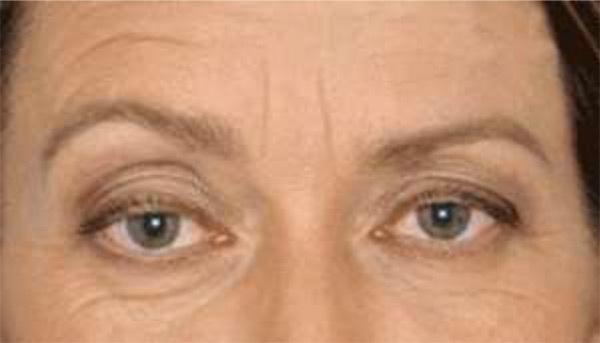
Knowledge of the mechanisms of development of age-related changes in the skin of the face and neck and wrinkle formation is necessary for a professional to solve the issue of directional correction of this process.
Correction of age-related changes should be complex and depends on the dominant type of aging, type and severity of aging, skin type (dry, oily, combination), skin sensitivity, as well as any presence of concomitant diseases, age and motivation of patients. It is especially important to have a timely appointment and the correct combination of various techniques. Comprehensive impact may include home and professional care, massage, peeling, injection, apparatus techniques, as well as tools for systemic exposure. Experts also recommend measures for a healthy lifestyle (smoking cessation, adequate duration of sleep, dosed physical activity, balanced diet) to completely slow this process of ageing skin.
Treatment of the facial telangiectasia (broken capillaries) in 49 y.o man Irina Kisseleva, RN, CDE
Dean. E. 49 y.o. man with widely spread broken capillaries on his chin, cheeks and nose. He has had them for more than five years and the area of the affected skin has gradually increased.
Past History: He works outside with exposure to the sun, cold and dry wind on his skin.
Multiple Basal Cell Carcinomas on the face.
Family History: Patient’s father had similar problems Patient was diagnosed with facial telangiectasia.
Before treatment
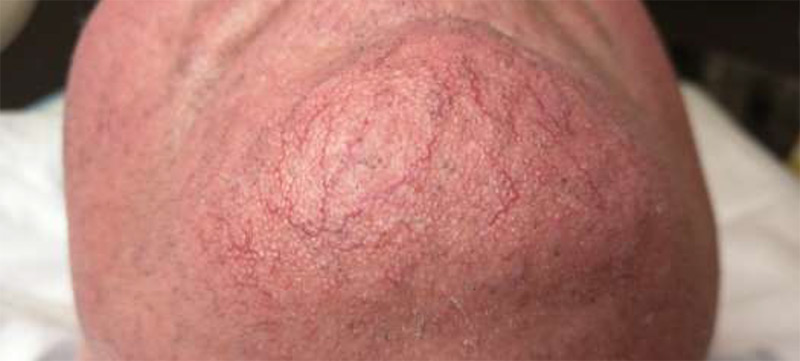
Telangiectasia is a condition in which widened venules (tiny blood vessels) cause threadlike red lines or patterns on the skin. These patterns, or telangiectases, form gradually and often in clusters. They’re sometimes known as “spider veins” because of their fine and weblike appearance. Telangiectases are common in areas that are easily seen (such as the lips, nose, eyes, fingers and cheeks). They can cause discomfort, and some people find them unattractive.
Telangiectases can be uncomfortable. They are generally not life-threatening, but some people may not like how they look. They develop gradually, but can be worsened by health and beauty products that cause skin irritation, such as abrasive soaps and sponges.
Symptoms include: pain (related to pressure on venules), itching, threadlike red marks or patterns on the skin.
The exact cause of telangiectasia is unknown. Researchers believe several causes may contribute to the development of telangiectases. These causes may be genetic, environmental, or a combination of both. It’s believed that most cases of telangiectasia are caused by chronic exposure to the sun or extreme temperatures. This is because they usually appear on the body where skin is often exposed to sunlight and air.
Other possible causes include:
Alcoholism: can affect the flow of blood in vessels and can cause liver disease, Pregnancy: often applies large amounts of pressure on venules,
Aging: aging blood vessels can begin to weaken,
Rosacea: enlarges venules in the face, creating a flushed appearance in cheeks and nose,
Habitual corticosteroid use: thins and weakens the skin,
Scleroderma: hardens and contracts the skin
Dermatomyositis: inflames skin and underlying muscle tissue,
Systemic lupus erythematosus: can increase skin sensitivity to sunlight and extreme temperatures
Management: The Skin Classic direct high frequency technology is an affordable non-laser treatment, it was offered to the patient.
The Skin Classic direct high frequency technology treats common minor skin conditions, on the surface of the skin. The Skin Classic precisely treats and/or removes each irregularity permanently, or semi-permanently, without the use of lasers, cutting, burning, or freezing which can affect areas of the skin that are not being treated. The Skin Classic utilizes a lamprobe to transmit an electric current to effectively vaporize and dehydrate the skin irregularity with little downtime and no damage to surrounding tissue. It treats these superficial common irregularities NON-invasively and extremely rapidly (3-5 sec), without the need of anaesthesia. The procedure delivers instantaneous results, in one treatment only. It has high and low radio frequencies and all frequencies in between, with the ability to target frequency level to unparalleled Single Digit precision.
Skin conditions effectively treated by the Skin Classic Direct high frequency technology include: telangiectasia, milia, cholesterol deposits, clogged pores, cherry angiomas, spider naevi, skin tags, fibromas, pimples and acne. Contraindications for Skin Classic Treatment: Pacemakers, Pregnancy, Lupus, Accutane users, Melasma, Moles.
After cleansing skin with skin cleanser (HL cosmetics “Bio Repair”) specifically designed for sensitive skin, applying a 35Hz Direct current frequency via the lamprobe-pen like device, barely touching skin for 3- 5 sec, moving the F12 size lamprobe along the pathological vessel from narrow end to the wide one. Every point of the probe’s application applied as close as possible to each other.
Immediately after treatment:
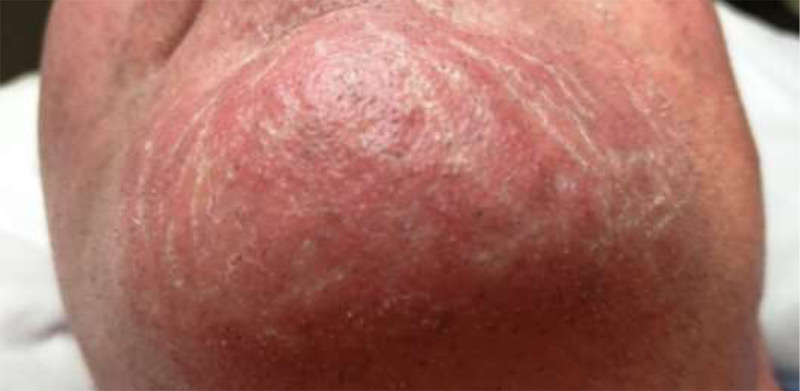
Patient was provided with “Home Care Instructions”. He was also advised not to shave for 2 weeks. He used moisturisers (HL Cosmetics) twice a day and sun protecting cream SPF 50. Post procedure period was uneventful. Patient returned for review in two weeks’ time.
Two weeks after procedure:
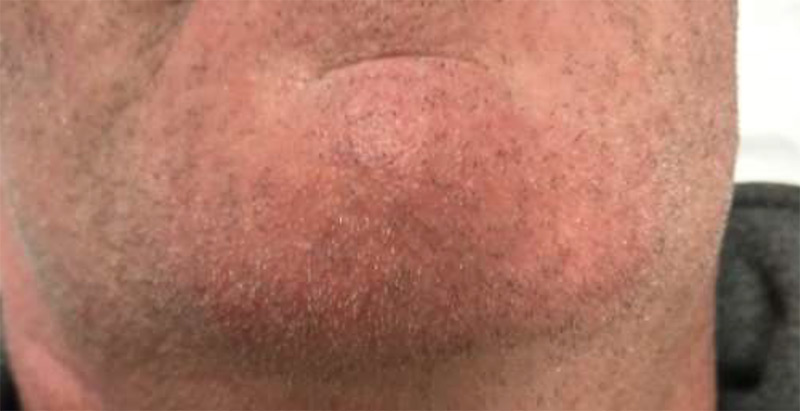
Conclusion: Current case demonstrates successful combination of professional skin care products – HL Cosmetics and The Skin Classic direct high frequency technology.
Clinical review
EHF-therapy in the treatment of skin diseases
A total of 336 patients aged 14 to 72 years with psoriasis were examined and treated (of which 76 people have common psoriasis, 58 – psoriatic arthritis). All patients received basic therapy. The experimental groups included 180 patients who, in combination with the basic therapy, received EHF exposure in the fixed frequency mode (7.1mm). The control group included 176 patients.
When including EHF-therapy in the treatment complex, all researchers noted an anti-inflammatory, analgesic, regenerative effect and the resorption of existing infiltrates. A pronounced clinical effect was observed in 78% of patients in the experimental groups and 61% of patients in control groups.
The average length of the hospital stays of patients receiving EHF-therapy amounted to 27.3 days, which is 20.3% shorter than in the group of patients receiving traditional drug therapy. In the experimental groups, a decrease in the number of early relapses (during the first 6 months after treatment) by 23.3% (among those receiving EHF-therapy – 10%, in control groups – 33.3%).
Trophic ulcers are a difficult problem to treat. There were 10 patients under observation. Patients observed drug dermatitis after treatment with any antiseptics, ointments or enzyme preparations. When conducting EHF-therapy (10 people), the dermatitis passed within 3-4 days from the start of treatment, the pain syndrome stopped after the first 2-3 sessions and ulcers with a depth of no more than 1mm with an area of 2-10cmsq became covered with an epithelium by an average of 12 days.
The use of EHF-therapy for atopic dermatitis showed an improvement in the general condition, a cessation of itching, a pronounced effect on humoral immunity, correction of the neuroendocrine system and an antiallergic effect. Patients in the experimental group (112 people) noted the painlessness of the procedures. In the control group (32 people) without EHF therapy, treatment effectiveness was worse.
There is evidence of the effectiveness of EHF therapy in fixed frequency mode (5.6mm) with microbial eczema, acne and neurodermatitis. A pronounced anti-inflammatory effect is observed.
135 patients with vitiligo were examined and treated. All received basic therapy (vitamins, hepatoprotectors). Patients were divided into three groups:
1st – received additional copper electrophoresis (35 people),
2nd – received EHF-therapy in the fixed frequency mode (7.1mm) (67 people) 3rd – only basic therapy (control – 33 people).
After EHF-therapy, recovery of intestinal microflora was noted in 38% of cases; the number of T-lymphocytes went from 33.3 +/- 0.2% to 43.3 +/- 3.2% (p <0.05), which was not observed in other groups. The beginning of pigment restoration was observed in the 1st group after 2.9 +/- 0.3 months, in the 2nd group – 2.3 +/- 0.3 months, in the 3rd – 3.4 +/- 0.3 months. In the group of patients receiving EHF-therapy, 45% of patients began to have pigment restoration during the course of treatment or immediately after, and when examined after a year, complete pigment restoration was noted in 10%. The control group had no observed complete restoration of the pigment, and in the 1st group – in 4% of patients.
104 patients with a herpes infection were examined, 51 of them had been diagnosed with Herpes simplex with a localization on the face or in the genital area and 53 had Herpes zoster. All patients received traditional therapy. Patients of the experimental group (74 people) additionally received EHF- therapy in the mode of fixed frequencies (7.1mm). A pronounced analgesic and anti-inflammatory effect of EHF-therapy had been identified. The disappearance of the itching and burning in the experimental group occurred on average 2 days earlier (p<0.001), erosion epithelization – 4 days earlier (p<0.001) and scab rejection – 7 days earlier (p<0.001) than in the control group. After EHF-therapy, postherpetic neuritis was observed 35% less often. All researchers noted the absence of adverse effects and complications of EHF- therapy and it was well tolerated by patients. During exposure to the trophic ulcer area, patients noted minor pain in the form of “tingling,” “stinging,” and “pressure”.
We examined 90 patients aged 19 to 50 years, in whom after the treatment of syphilis, a complex of serological reactions was not negated for a year or more. Patients were divided into three groups: The 1st – 30 people, who received additional immunocorrector lycopid
2nd – 30 people receiving EHF-therapy
3rd – 30 people receiving traditional therapy only (detoxification and antibacterial).
Studies have shown that EHF-therapy has an immune-corrective effect, acceleration of the negative tendency in the complex of serological reactions and an antidepressant effect. Allergic reactions and other side effects were not observed. The timing of the onset of negativity in the 1st group was 11.3 +/- 1.6 months, in the 2nd – 5.8 +/- 0.8 months and in the 3rd – 18.6 +/- 1.6 months. The proportion of patients with negativity in the 1st group 63%, in the 2nd – 50%, in the 3rd – 33%. The number of patients without a reduction in the positivity in the 1st and 2nd groups – 2 people and in the 3rd control group – 7 people.
| Authors | Publication | Institution |
| Kournikov G.Y., Kornaukhov A.V., Nikulin N.K., Klemenova I.A., Zharikov V.I., Lizunova A.A. |
EHF-therapy in the treatment of skin diseases // Millimeter waves in biology and medicine. – 1999. – No. 1. – p. 38-39 | Nizhny Novgorod Research Institute of Skin and Venereology |
| Drovyannikova L.P., Orlov E.V., Kiseleva O.V. |
The effectiveness of methotrexate and EHF- therapy in the complex treatment of patients with psoriasis // Millimeter waves in biology and medicine: Sat. doc. XIII Symposium – M., 2003. – p. 33-36 | |
| Adaskevich V.P. | The use of millimeter- wave electromagnetic illumination in the complex treatment of patients with atopic dermatitis // X Russian symposium with international participation “Millimeter waves in quantum medicine “- M .: IRE RAS, 1995. – p. 53-54 | Vitebsk Medical Institute (Vitebsk, Belarus) |
| Labzovskaya N.P. | Comprehensive treatment of vitiligo patients with using phono-, endoionophoresis copper and EHF waves: Abstract. diss. … Ph.D. – Tomsk, 2003 .– 23 p. |
Siberian Medical University |
| Voronina T.N. | Herpetic infection: clinical and pathogenetic rationale for the use of EHF- therapy: Abstract. diss. … Ph.D. – Saratov, 2003 .– 23 p. | Saratov State Medical University |
| Shushenacheva E.E | Improving the treatment of seroresistant syphilis through the use of differentiated immunocorrective therapy, percutaneous laser illumination of blood and EHF-therapy: Abstract. diss. … Ph.D. – Novosibirsk, 2006. — 19 p. | Khakass Republican South Venereal Dispensary |
Key: EHF – Extremely high frequency
Would you like to be a part of the CURE Method?
Your Health Connect Group offers short term contracts (6 months) to those candidates who are interested in learning advanced methods of treatment for Musculoskeletal Disorders (Certificate included). And the best part, you will be able to learn and work without losing the income!
Outside the short-term contracts, YHC group offers full-time positions to VR and Generally registered Australian Doctors. Please refer to the job description below.
Position Description:
Full or part time GPs are required to join clinics operated by Your Health Connect. The right candidates will require to deliver services focusing primarily on ageing population, including assessments, examinations, treatments, and case management. As well as proven methods, GPs will be expected to adopt and use contemporary technologies of rehabilitation and treatment. Great professional development is available, as well as in situ training provided by our leading specialists.
We offer the following:
- Accredited Training Practice
- Mixed Billing
- Supportive & Friendly Environment
- Rehabilitation facilities with gym, electrotherapy and laser therapy
- Full Time Nursing
- Onsite Pathology, Psychology, Physiotherapy, Podiatry, Dietician and Diabetes Educator
- Fully Accredited with AGPAL
- Fully Computerised
- Small, friendly and experienced team
- Secure onsite parking
- Your own consulting room
- Up to 70% of receipts is available based on experience and duties.
For more information refer to the following links:
Roman Kisselev
Manager of the Your Health Connect Group
Website: https://tasgpjobs.com.au/
Facebook: https://www.facebook.com/tasgpjobs/
Instagram: https://www.instagram.com/tasgpjobs/?hl=en
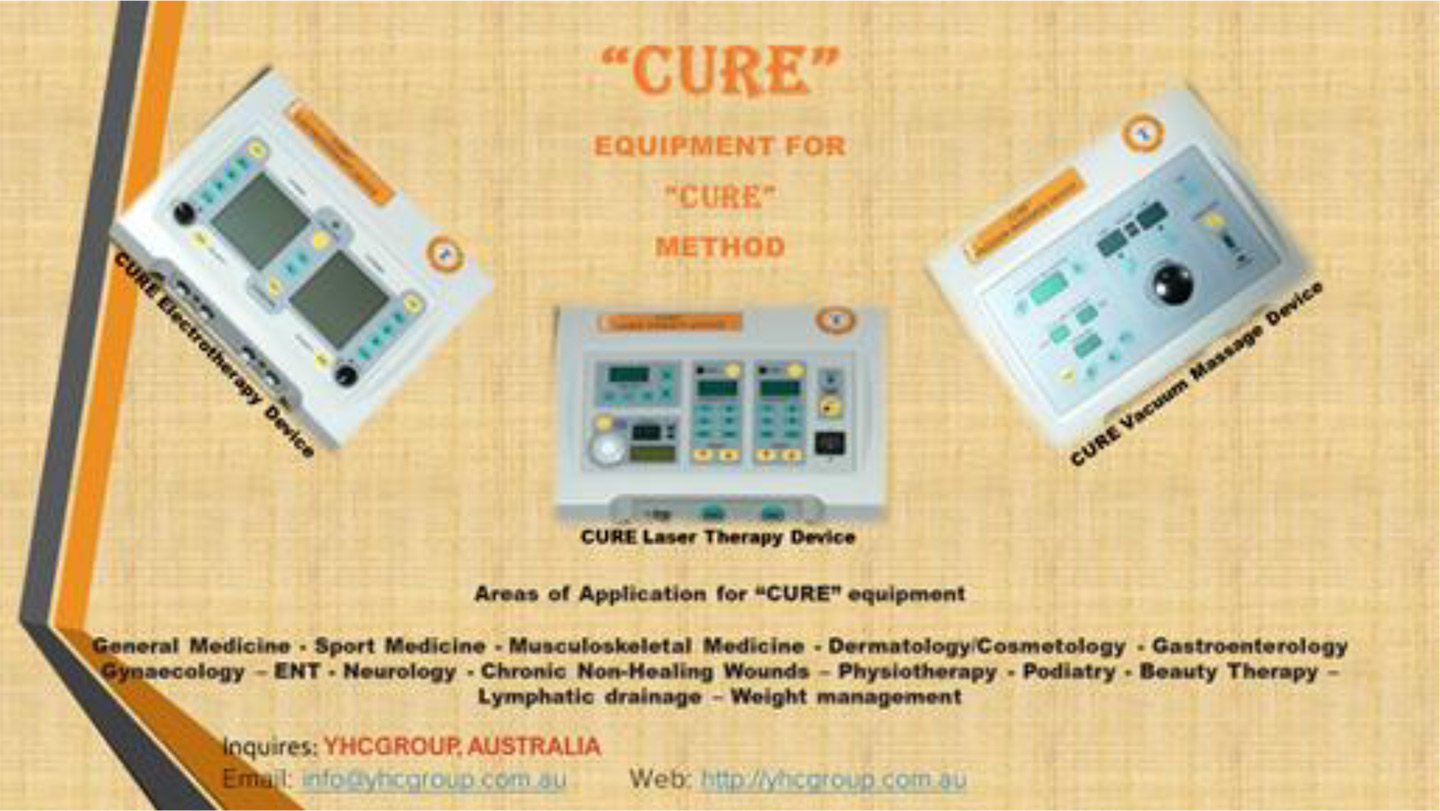
For all medical translation needs from Russian to English, please email: [email protected]
